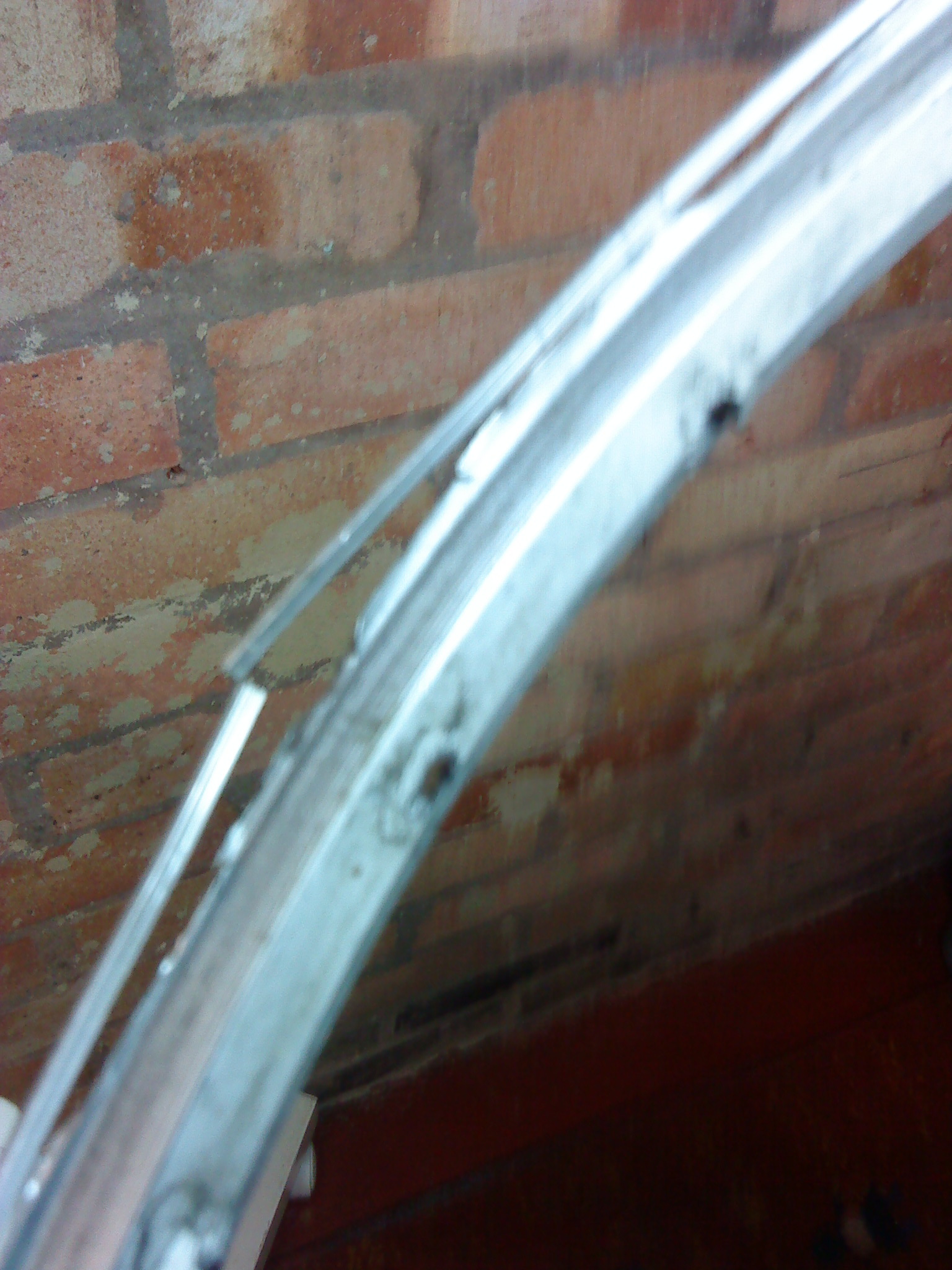Rims Go Bad. Makes Us Sad.
People think rims last until they're bent out of round from a crash or pothole or broken spokes, but there's another killer out there.
We ask a lot out of rims. They have to hold the tire in place, support the weight of the bike and rider, stay round and rolly, and provide a braking surface for the pads to rub on. It's this last vocation, stopping, that gets them into trouble. And unless you check regularly you'd never know until it's too late (dun dun duun)...
Check out this rim:
See how the knife touches the top and bottom but not the center? That's because the brake pads have dug out a valley. Brake pads act like sand paper, especially when they get old or imbedded with actual sand and road debris; give them time and they'll carve the aluminum right out of the rim.
It's easy to see if your rim is dead or dying. Most rims have a wear indicator, which usually looks like a black line or two black dots in the center of the brake surface. When the line or the dots disappear it's time for a new rim. In my experience the wheel starts to act up too. It gets weak and falls out of true more easily than usual.
You want to replace a rim as soon as you notice wear because it can actually explode fantastically:
The reason why has to do with the inflation of the tire. The inflated tube presses against the tire, holding it to the rim, but it also presses on the body of the rim at many times the outside atmospheric pressure. When the aluminum (or carbon or wood or steel) gets worn thin it won't have the strength to hold that pressure inside, so, KaBoOm!
There isn't much you can do to prevent rim wear, except buy a bike with disc brakes (which have their own issues). Though replacing brake pads every so often helps. Also, make sure you don't have one pad that's dragging on the rim while you ride.
Fun little tidbit: most rims, even the fancy new ones, are only rated to 125psi. So although Vittoria or some other company might have a tire that says "max 200psi", don't go there unless you want to add another layer of excitement to your afternoon ride
About the writer:
Scott Wilson is a BFF mechanic with a decade's experience in shops throughout the nation. He likes working on triathlon, road, and mountain bikes, and In 2015 he fabricated his first frame and fork at Doug Fattic's workshop. Check out his personal bike blog for more: bikeblogordie.com



